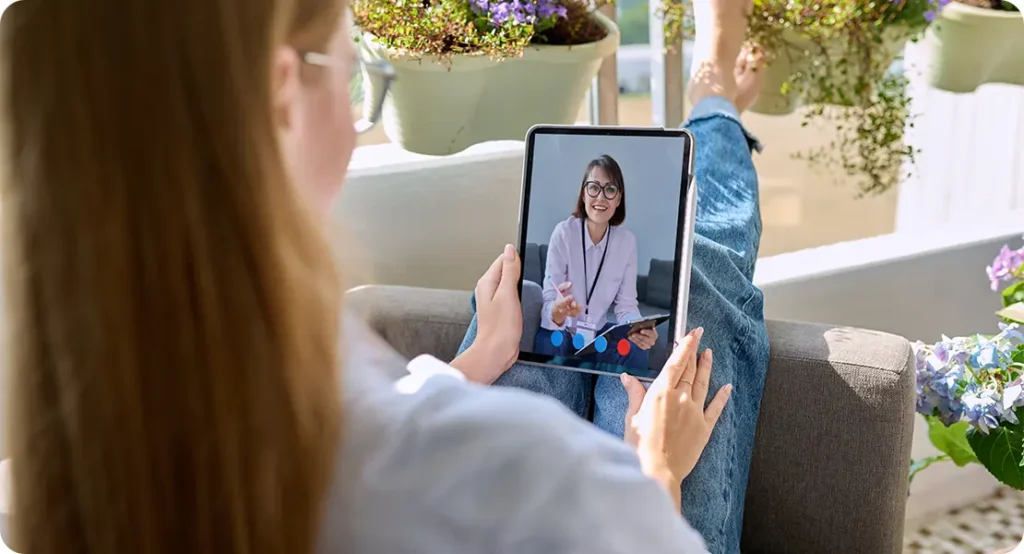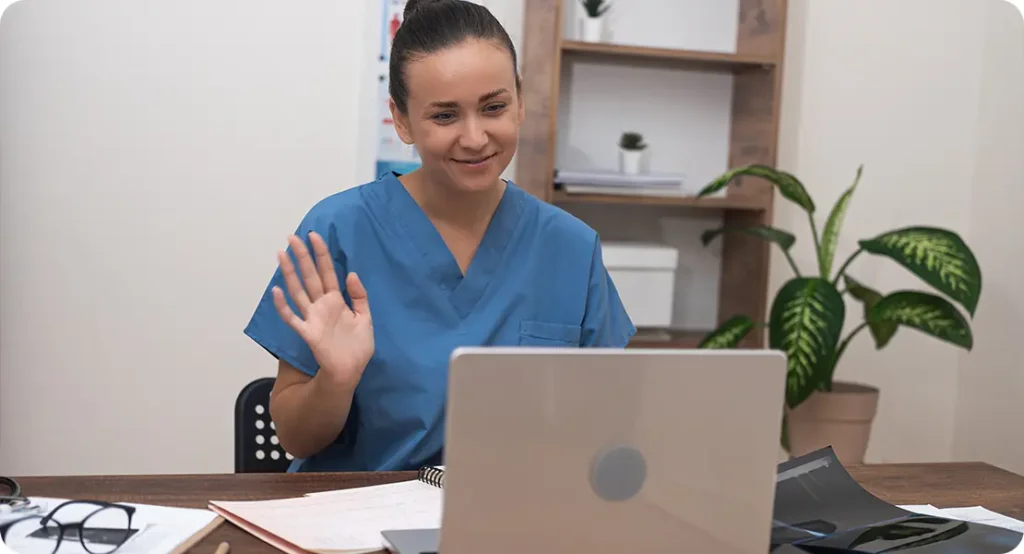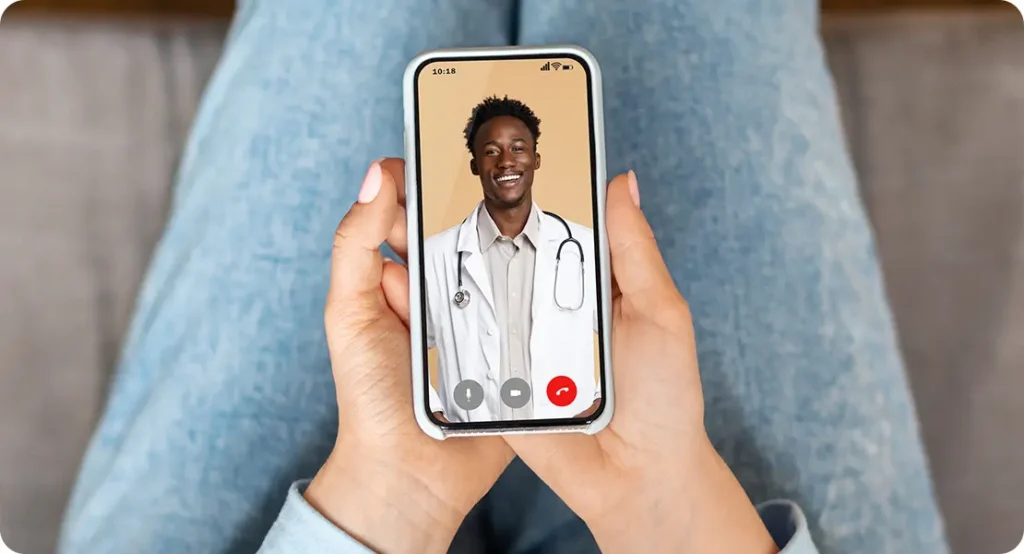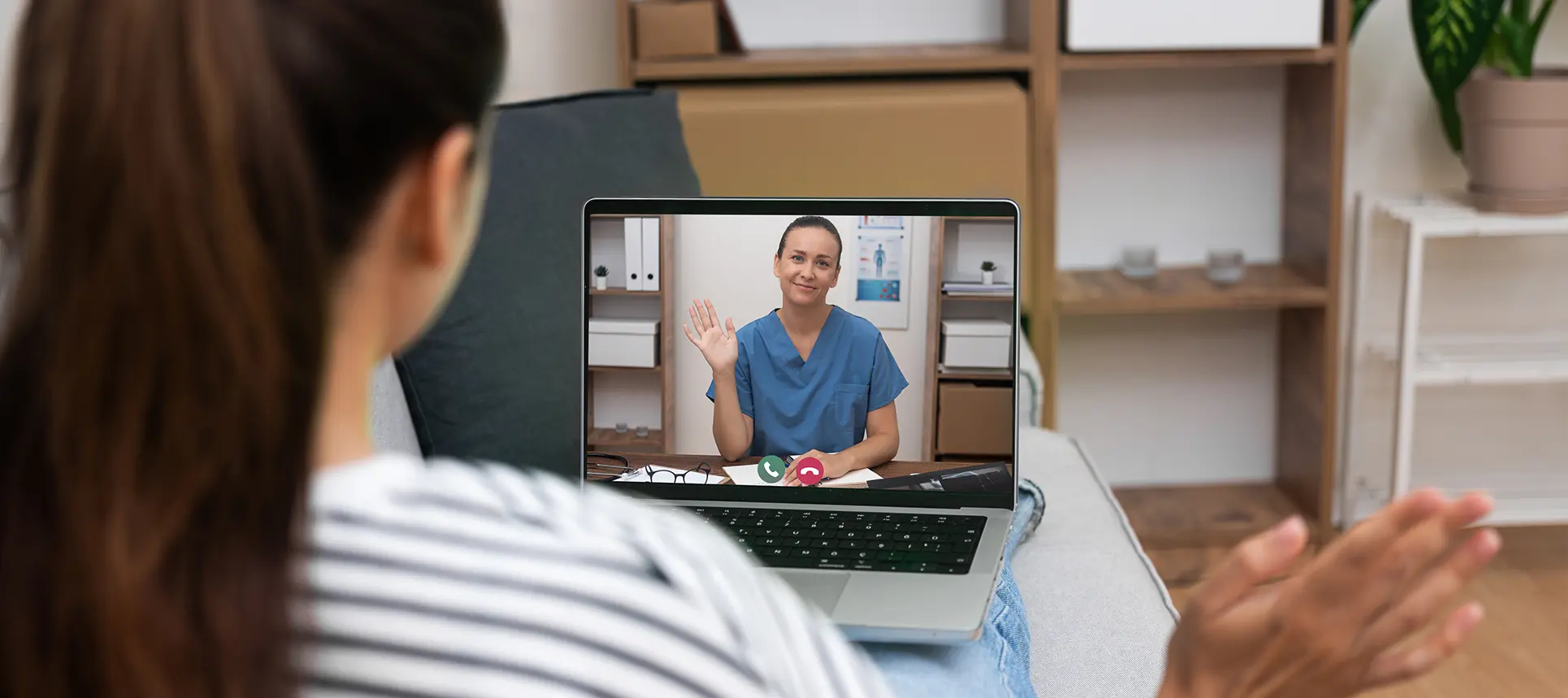Gone are the days when you had to sit on hold for half an hour just to book a dermatologist appointment—or wait months to be seen. In today’s world, skin care has gone digital. Whether it’s checking a suspicious mole, managing acne, or dealing with flare-ups of eczema, more and more people are turning to teledermatology for quick, expert advice from the comfort of their own home. But is this just a post-pandemic convenience, or is it a genuine revolution in the way we look after our skin?
In this article, we’ll explore how teledermatology is changing the game. We’ll break down how it works, who it helps, and where it falls short. We’ll also take a look at what the future holds—because this isn’t just about video calls. It’s about reshaping the entire patient experience. So if you’ve ever wondered whether a virtual skin consultation is worth trying, or what role technology might play in your future dermatology appointments, keep reading.
1. A New Era in Skin Care
Remember when getting a dermatologist appointment meant waiting weeks, sometimes even months? You’d take time off work, sit in traffic, then flick through a dog-eared magazine in a waiting room. Those days aren’t gone entirely—but they are fading fast. Welcome to the age of teledermatology. This is more than just a lockdown trend. It’s a genuine shift in how we access expert skin care. Through virtual consultations, patients can now connect with specialists from the comfort of their own homes. Whether it’s a persistent rash, an acne breakout, or a mole that’s been bothering you, a qualified dermatologist is now just a few clicks away.
The shift has been driven by both necessity and innovation. During the pandemic, virtual appointments became the norm out of sheer urgency. But what started as a workaround has turned into a preferred method for many. No waiting rooms, no time off work, no battling through traffic. Just convenient, direct access to someone who can help. Plus, with smartphones becoming more sophisticated, high-quality images and video calls are easier than ever to send and receive. It’s a win-win: dermatologists can triage and diagnose faster, and patients feel seen and heard—often without stepping out the front door. We’re not saying traditional appointments are dead, but they’ve definitely got some strong competition. In this new era, skin care meets digital convenience head-on, and the result is a system that works better for everyone involved.
2. What Exactly is Teledermatology?
In simple terms, teledermatology is the use of digital technology—usually video calls, photos, or messaging platforms—to diagnose and manage skin conditions. It works in two main ways: live video consultations (synchronous) and image-based reviews (asynchronous). You might snap a photo of your skin concern, upload it to a secure platform, and receive a diagnosis or advice later. Or, you could have a real-time video chat with your dermatologist. It’s all about convenience, speed, and accessibility. With skin issues often being visual in nature, dermatology has proven particularly well-suited to this remote model. And for patients in rural areas or with limited mobility, it’s been a game-changer.
What makes teledermatology especially effective is the fact that so many skin conditions can be assessed visually. Unlike other medical fields that rely heavily on physical exams or diagnostic tools, dermatology often hinges on what the skin looks like. A clear, well-lit photo can often be enough for a trained specialist to make an initial diagnosis. And because the asynchronous model allows dermatologists to review cases in their own time, they can often manage a greater number of cases without compromising quality. Teledermatology is also playing a growing role in general practice. GPs can consult with dermatologists remotely, speeding up referrals and helping to prioritise urgent cases like suspected skin cancers. All of this makes care more streamlined, more responsive, and—perhaps most importantly—more inclusive. For people who struggle with time, travel, or anxiety about visiting clinics, the ability to access help remotely is nothing short of transformative.
3. The Benefits: More Than Just Convenience
Yes, skipping the waiting room is great—but teledermatology offers more than just saving time. One of the biggest advantages is faster access to care. Many skin conditions, if caught early, are easier to treat. With teleconsultations, you can get a dermatologist’s input within days—sometimes hours. This means less stress, fewer complications, and better outcomes. It’s also discreet. Some people feel embarrassed showing their skin concerns in person. A remote option offers a bit of distance, making it easier to seek help. And let’s not forget cost—teledermatology can be more affordable, both for healthcare systems and patients.

But beyond speed and savings, there’s something else worth highlighting: empowerment. Patients are taking more control of their health. They can upload images, monitor their own progress, and receive guidance without needing to book weeks in advance or rearrange their lives. It’s also helping dermatologists focus their time and resources more effectively. They can manage routine cases remotely and reserve in-person appointments for more complex or urgent issues. That’s a win for everyone. Plus, teledermatology supports continuity of care. Ongoing conditions like psoriasis or acne can be monitored over time with regular virtual check-ins. This leads to better treatment adherence and improved long-term outcomes. Overall, it’s a more flexible, responsive system—one that puts patient needs first and adapts to modern lifestyles.
4. Limitations and What It Can’t Do (Yet)
Of course, teledermatology isn’t perfect. There are times when nothing beats a hands-on examination. Some conditions require touch, texture assessment, or biopsies, which can’t be done through a screen. Poor photo quality can also hinder diagnosis. Lighting, camera resolution, and angle all matter more than you’d think. And then there’s the tech barrier—not everyone has the right device or a stable internet connection. There’s also the human element. Some patients simply feel more comfortable face-to-face, and that’s perfectly valid. Teledermatology isn’t here to replace traditional appointments entirely—it’s here to complement them.
It’s also worth noting that certain skin conditions are subtle and may evolve over time. A snapshot might not always capture the full picture. In these cases, a physical exam can reveal nuances—like the feel of the skin, temperature, or underlying inflammation—that a screen just can’t convey. Additionally, cultural or language barriers can sometimes make virtual communication trickier. It’s harder to read body language or establish rapport through a screen, which may affect the consultation experience. There are also medicolegal concerns: clear documentation and secure communication are essential, especially when making clinical decisions remotely. Lastly, for some patients—particularly older adults or those with limited tech confidence—the idea of a video call with a doctor can feel daunting. That’s why a blended approach often works best: using teledermatology when it makes sense, and offering in-person support when it’s needed. It’s all about balance and making sure no one is left behind in the digital shift.
5. Who’s Using Teledermatology—and Why?
Interestingly, it’s not just younger, tech-savvy patients embracing virtual skin care. Older adults are turning to teledermatology too, especially those with mobility challenges or chronic conditions. Parents of young children love the ease of showing a rash without packing up the whole family. And then there’s the global reach. In countries with fewer dermatologists per capita, virtual consultations are filling an urgent gap. Some platforms even offer multilingual support, making care more inclusive. The bottom line? Teledermatology is proving useful across a wide range of ages, backgrounds, and medical needs.

In fact, one of the most remarkable aspects of teledermatology is how it levels the playing field. For those living in rural or underserved areas, access to a dermatologist might once have meant travelling long distances or facing extended waiting lists. Now, with just a smartphone or computer, they can receive expert advice that was previously out of reach. This democratisation of care is particularly valuable in areas affected by healthcare inequality. Refugees, individuals with disabilities, and people who may feel stigmatised by in-person consultations are also benefiting from the discretion and flexibility of remote options. Some platforms even allow patients to upload symptoms anonymously before engaging further. For healthcare systems looking to reduce pressure and improve efficiency, teledermatology is proving an essential tool—not only expanding reach but also streamlining services. Simply put, it’s changing who can access care and how they do it, and it’s doing so in a way that’s inclusive, efficient, and empowering.
6. Security and Patient Privacy in the Digital Age
Understandably, one of the biggest concerns around any form of digital healthcare is privacy. After all, we’re talking about sending photos of your skin—sometimes quite sensitive areas—over the internet. So how is that handled? Most reputable teledermatology platforms use secure, encrypted systems designed to comply with strict medical privacy laws. In the UK, this means following GDPR and NHS digital standards. Your photos and records aren’t floating around online—they’re stored securely, just like they would be in a clinic. Still, it’s important to use trusted platforms and apps. If you’re not sure, ask your GP or dermatologist to recommend one.
That said, protecting privacy isn’t just about technology—it’s also about process. The best platforms have clear protocols in place: consent forms, data handling policies, and secure logins. Some even use two-factor authentication for an added layer of security. Patients should feel confident that their information won’t be shared without permission, and clinicians must be trained to handle digital records with the same care they would paper ones. There’s also growing awareness around ethical photo use—ensuring patient images aren’t used in training or publications without explicit consent. In short, while digital healthcare brings new privacy risks, it also brings new solutions. When the right safeguards are in place, teledermatology can be just as safe—if not safer—than traditional care. As a patient, you have every right to ask how your data will be stored and used. Transparency builds trust, and in the digital age, trust is everything.
7. Teledermatology and the NHS
You might be wondering—how does all this fit into the NHS? Quite well, actually. In fact, many NHS trusts already use teledermatology to triage referrals and prioritise urgent cases. It’s helped reduce waiting times for skin cancer assessments and cut down unnecessary face-to-face appointments. Patients submit images through GP practices, which are then reviewed by dermatologists. It’s efficient and scalable. However, like much of the NHS, the system is under pressure. Resources, training, and consistent access are still challenges. But the direction of travel is clear: teledermatology is becoming a core part of modern healthcare delivery in the UK.

In practice, the benefits go far beyond efficiency. Teledermatology supports earlier detection of serious conditions—particularly skin cancer—by enabling faster clinical decision-making. A GP can take a high-resolution photo during a standard appointment, upload it to a secure NHS system, and often receive expert feedback within days. This reduces bottlenecks and means that patients with potentially serious issues are fast-tracked for treatment. For those with benign conditions, it can prevent unnecessary hospital visits altogether. But successful adoption depends on investment: reliable digital infrastructure, staff training, and patient education all play a role. As digital healthcare grows, it’s essential that no one is left behind. Equal access, particularly in areas of digital poverty or with older populations, will be key to ensuring the full potential of teledermatology is realised across the NHS.
8. The Role of AI in Remote Skin Assessments
Now, let’s talk about the tech that’s pushing things even further—AI. Artificial intelligence is starting to play a role in skin diagnostics, with algorithms trained to recognise common conditions from images. Some apps now offer instant feedback on whether a mole looks suspicious or a rash needs attention. Impressive? Definitely. But we’re not quite at the stage where AI can replace human dermatologists. It’s more of a tool—a second opinion or a way to streamline initial assessments. Used wisely, AI could help make teledermatology even faster and more accessible in the future.
AI’s real strength lies in its ability to quickly analyse vast amounts of visual data and spot patterns the human eye might miss. It’s already proving helpful in flagging high-risk lesions or categorising skin types to recommend tailored treatments. In areas with limited access to specialists, AI tools can be a crucial first step in identifying whether someone needs to see a dermatologist urgently. That said, there are limitations. Algorithms can struggle with diverse skin tones, rare conditions, or mixed presentations that don’t fit neatly into a database. Human oversight remains essential—AI can assist, but it shouldn’t be making clinical decisions alone. What we’re seeing is the emergence of a hybrid model: dermatologists supported by intelligent systems, not replaced by them.
With proper regulation and development, AI could significantly reduce the workload on dermatology services and widen access without compromising on care quality. It’s not the future of skin care—it’s already here, and growing fast.
9. Building Trust in a Virtual World
One challenge for any digital health service is trust. Patients want to know that they’re still getting quality care, even if it’s online. That means clear communication, thorough follow-up, and the ability to escalate things when needed. Good teledermatology platforms offer all of that. You should never feel like you’re being rushed or brushed off. If anything feels unclear, you should always be able to ask questions or book a face-to-face appointment. Building trust also means transparency—being clear about what teledermatology can and can’t do. When that trust is there, virtual care works beautifully.
But trust isn’t built overnight—it’s earned through every interaction. That includes how quickly queries are answered, how well clinicians explain diagnoses, and how secure patients feel sharing sensitive images or concerns. Personalisation plays a big part as well. When virtual care is tailored to your needs—with reminders, educational content, and check-ins—it feels a lot more human. Healthcare providers also need to be transparent about potential limitations. Being honest about what can’t be diagnosed remotely shows respect for the patient’s wellbeing and builds credibility. On the tech side, ensuring platforms are user-friendly, accessible to those with disabilities, and available in multiple languages all helps build confidence. Ultimately, people need to feel that remote care is just as attentive and reliable as seeing someone in person. And when that’s achieved, teledermatology isn’t just effective—it’s genuinely reassuring.
10. The Future of Teledermatology: What’s Next?
So, where is all this going? Expect to see even more integration with wearable tech, AI-powered tools, and instant messaging services. We’re heading towards a hybrid model, where remote consultations are used for routine checks and follow-ups, while in-person care is reserved for more complex cases. Education will be key—both for patients and practitioners. As more people get comfortable using these services, the system will continue to evolve. Teledermatology isn’t a passing trend. It’s a permanent, powerful shift in the way we care for our skin. And in a world where convenience, speed, and flexibility matter more than ever, it’s clear that remote skin care is here to stay.
What’s particularly exciting is the potential for personalised, preventative care. Imagine a future where your smartwatch can monitor UV exposure or hydration levels, sending data to your dermatologist in real-time. Or a system that flags early changes in chronic skin conditions using AI, long before symptoms become visible. We’re already seeing the beginnings of this, and it’s only going to get more sophisticated.

Collaboration between dermatologists, tech developers, and policy makers will be essential to ensure these innovations are safe, ethical, and accessible to all. There’s also likely to be a growing emphasis on digital health literacy—making sure people know how to use these tools effectively. As we move forward, it’s not just about replacing old systems—it’s about reimagining how we deliver care. Teledermatology is leading that charge, turning what used to be a long, inconvenient process into something faster, smarter, and more patient-centred than ever before.
Final Words
Teledermatology has opened the door to a smarter, more accessible approach to skin care. It’s made expert advice easier to reach, cut down waiting times, and offered a lifeline to patients who might otherwise have gone unseen. While it’s not a replacement for in-person examinations, it’s a powerful complement—and for many everyday skin concerns, it’s more than enough to get you the help you need.
As with any digital shift, there are still hurdles to overcome—tech limitations, accessibility, and making sure patients feel heard and supported. But the potential is clear. Teledermatology is fast becoming a trusted, valuable part of modern healthcare.
So whether you’re dealing with something minor or simply want peace of mind, don’t overlook what a virtual consultation can offer. The future of skin care isn’t just in the clinic—it’s in your pocket, too. If you’d like to book a consultation with one of our expert consultant dermatologists, you can get in touch with us at The London Dermatology Centre and our team would be happy to assist you.
